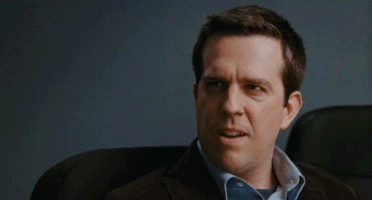No forums found...
Site Related
Iowa State
College Sports
General - Non ISU
CF Archive
Install the app
The Coin Problem
- Thread starter Acylum
- Start date
No forums found...
Site Related
Iowa State
College Sports
General - Non ISU
CF Archive
You are using an out of date browser. It may not display this or other websites correctly.
You should upgrade or use an alternative browser.
You should upgrade or use an alternative browser.
Blocked and reported.This gave me a headache.
View attachment 107389
So in other words, how many circumferences of B will it take to equal the circumference of A? Assuming no slippageThis gave me a headache.
View attachment 107389
No. That’s the gotcha of the problem and is not correct.So in other words, how many circumferences of B will it take to equal the circumference of A? Assuming no slippage
The issue is the question asked in the original post is not the same as the video. They are confusing circumference and radius assuming they are the same thing.
EDIT: I am also an idiot. That should not matter.
EDIT: I am also an idiot. That should not matter.
They are not the same but the ratio of the small one to the big one is the same whether you use radius or circumference.The issue is the question asked in the original post is not the same as the video. They are confusing circumference and radius assuming they are the same thing.
The diameters would end up the same ratio.The issue is the question asked in the original post is not the same as the video. They are confusing circumference and radius assuming they are the same thing.
EDIT: I am also an idiot. That should not matter.
That would be three. Which is how I did it in my head. I just imagined the larger circumference as a straight line and how many revolutions it would take for the smaller circle to travel that distance. Which is wrong and apparently what the SAT writer did also.So in other words, how many circumferences of B will it take to equal the circumference of A? Assuming no slippage
A much better explanation:
This isn't helpful to me. The only way to solve it is with arts and crafts?
I came up with the same answer but got there a different way. I knew it would roll around the larger circumference three times -- that is FDR's neck would hit the larger circle three times -- but he would end up making one more revolution because the point his neck hits the large circle ends up adding up to another revolution.
I know that explanation doesn't make sense but it does to me.
For the first part you can stretch the large circle's circumference out to a straight line and roll along it. Then you need to add in how going around a circle rather than on a straight line adds or subtracts to the total rotation of the small coin.
If you take a coin and rotate it in place around a fixed point, it makes one revolution. So just to rotate around anything adds a revolution. Then add another three revolutions for the diameter of the larger coin.
If you take a coin and rotate it in place around a fixed point, it makes one revolution. So just to rotate around anything adds a revolution. Then add another three revolutions for the diameter of the larger coin.
There. Thank you. Now it makes sense.
Best explanationIf you take a coin and rotate it in place around a fixed point, it makes one revolution. So just to rotate around anything adds a revolution. Then add another three revolutions for the diameter of the larger coin.




